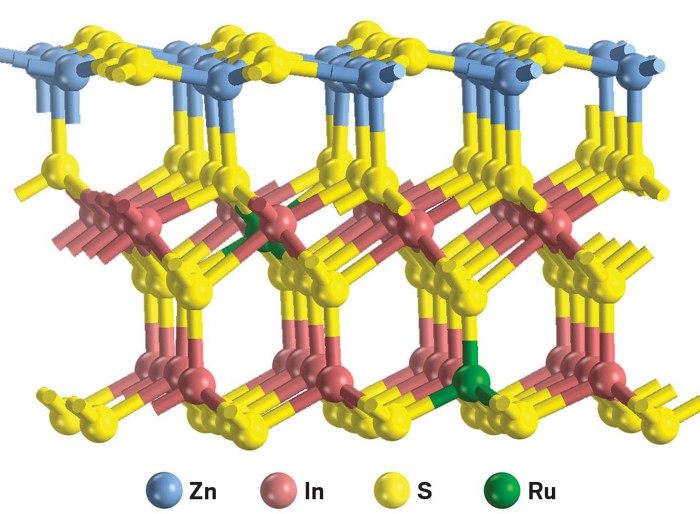Light-driven process converts compounds derived from biomass to diesel-fuel precursors and hydrogen
Green chemistry’s long list of goals includes two especially well-studied ones: generating hydrogen from renewable resources and converting biomass to fuels and valuable chemicals. Most efforts address one topic or the other. But an international team of researchers now reports a two-for-one deal: a method for producing both diesel-fuel precursors and hydrogen from biomass-derived starting materials (Nat. Energy 2019, DOI: 10.1038/s41560-019-0403-5).

When irradiated by visible light, this catalyst converts biomass compounds to diesel-fuel precursors and hydrogen. (Image credit by Nat. Energy)
Splitting water into molecular hydrogen and oxygen—using sunlight and a photocatalyst—is an attractive and potentially inexpensive way of producing clean-burning hydrogen fuel. The process often relies on semiconductor catalysts. When illuminated, these catalysts generate excited electrons that reduce protons in water to form hydrogen.
But light absorption also generates excited holes, or positive-charge carriers. These potent oxidizers can corrode the catalyst, reducing its effectiveness. Researchers often add sacrificial reagents to scavenge these damaging charges. That strategy maintains high hydrogen-production rates, but scavengers add cost and generate waste products.
Rather than sweeping up the holes to keep them from causing trouble, Nengchao Luo and Feng Wang of the Dalian Institute of Chemical Physics and coworkers sought to use these species to drive desirable reactions that can convert biomass compounds to something useful.
The team focused on two such compounds, 2,5-dimethylfuran and 2-methylfuran, which are commonly derived from lignocellulose. The researchers studied a series of metal-doped catalysts and found that when irradiated by visible light, Ru-doped ZnIn2S4 readily couples the furanics, generating dimers, trimers, and tetramers, and liberates hydrogen. Then the researchers showed that the products, which have roughly 10–20 carbon atoms, could serve as precursors for making diesel fuel. Using the hydrogen generated in the coupling reactions and a second catalyst, the team produced a mixture of linear and branched alkanes in the C12–C18 range typical of diesel with a yield of 76%.
This study reports an important innovation in using light energy to convert biomass to liquid fuels, says McGill University’s Chao-Jun Li, a specialist in green chemistry and catalysis. Much of the previous work in this field is based on high-temperature pyrolysis of biomass, which generates a complex mixture of products, Li says. One of the challenges is finding efficient and selective ways to generate liquid fuels with long carbon chains. This work represents an important advance in that direction, he notes.
The researchers used light-emitting diode light and needed to supply additional hydrogen to convert the precursors to fuel molecules, Li adds. It would be even more attractive to see if they could use sunlight directly to make the precursors and combine that process with solar-generated hydrogen. (By C&EN)